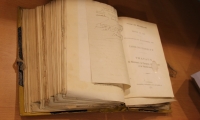After the First World War, innovative building techniques and finishes were widely developed and adopted, thereby responding to the need for low-cost materials and quick rebuilding campaigns. Cement renders were widely introduced as façade finish and became popular in use to cover war damage, to create a uniform façade view, to camouflage inferior brickwork and to mimic noble façade materials. Cimorné was one of these cement-based renders and was developed in the late 1920s. Walloon plasterer Pétroons experimented with pigmented cement mortar and waste of glass production in order to create a colourful finish that would not fade overtime. Both the used cement mortar and opalescent glass fragments were manufactured in the Hainaut province and thus locally available.
This thesis studies the history, production, and use of cimorné render, a typical Belgian and vernacular decorative finish. Within a few years, cimorné became very popular for rehabilitation works as well as new build. In the mid-1930s architects like Louis-Herman De Koninck, Renaat Braem, and Gaston Eysselinck opted for cimorné for the construction of modernist dwellings. Since the labour-intensive application technique and formula were orally transferred between contractors, the know-how of this craftsmanship got lost. To expand knowledge, this research reconstructs the material history of cimorné render, and sets up an ‘identification card’ to heritage experts, services, and amateurs who very often do not recognize cimorné render – in both senses of the word.
An important part of our interwar heritage is finished with cimorné, and is currently in need of repair and restoration. Since knowledge about the original characteristics is missing, and preliminary research is often not sufficiently carried out, lots of repairs fail. To formulate legitimate repair guidelines, a damage atlas was set up based on extensive fieldwork and onsite damage assessment. A methodology was developed for conserving, reparing and reconstructing cimorné render. This interdisciplinary research both treats the material history of cimorné render and current restoration issues. Cimorné, a typical Belgian craftsmanship and technique, was widely adopted in the interwar period but remained unknown. This research project wants to contribute to the recognition, conservation and restoration of cimorné render.

